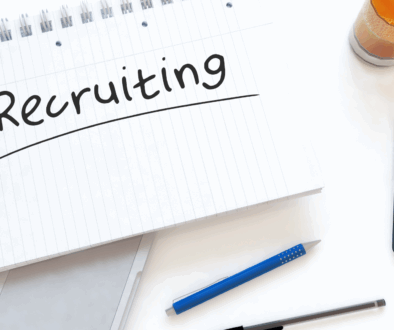HR Risk Management: What to Monitor
You may remember that early last year, Silicon Valley Bank imploded in the second biggest bank failure in U.S. history. During the course of 10 hours, SVB customers withdrew $42 billion from their accounts in what is now known as the largest bank run in history.
This collapse came after a quiet period (the last bank failure occurred in late 2020 during the pandemic), but its effects were anything but quiet.
The scope and public nature of the SVB shutdown were eerily reminiscent of bank failures during the 2008 financial crisis, leaving everyone (naturally) concerned about their economic futures.
While the Federal Reserve worked with large banks to stabilize the U.S. economy and right the precarious financial situation, U.S. businesses felt the real ripple effects of their every move.
For companies everywhere, this is a real threat of risk—making it the perfect time to strengthen defenses and fine-tune crisis management plans.
Read on to learn how HR professionals can leverage their skills and knowledge to round out an organization’s risk management planning.
Risk Management 101
Risk comes in all shapes and sizes, from cybersecurity breaches to health emergencies like COVID-19, but the business impact is often identical. Customer attrition, damaged reputation, lost income, strained relationships with stakeholders, and employee turnover are all potential–and probable–outcomes of a crisis.
That’s why companies invest in risk management—to spot and stop threats before they even happen and to minimize the negative effects of unavoidable setbacks that hit the business (i.e. a recession).
It’s all about anticipating the risks that are most likely to happen and creating a defense plan around that analysis that protects the business from all angles—including from the inside out.
Top HR Risk Management Concerns (And How to Mitigate Them)
No comprehensive risk management plan is complete without employee risk factored in.
HR risk management focuses on how employees are hired and managed throughout their lifecycle and how they behave in the workplace—ultimately protecting the organization’s operational, financial, and reputational well-being.
According to the Academy to Innovate HR (AIHR), the most common areas of HR risk include:
Workforce Risks
Workforce-related risk includes turnover, employee burnout, lack of employee engagement, workplace harassment, labor relations, remote work, and more–any employee activity or trend that could threaten an organization’s operational, financial, and reputational health.
Employee Data Management
Human resources departments collect and house some of the company networks’ most highly sensitive data. While other departments focus on customer data, product info, and other sensitive intellectual property, human resources manage critical employee data. This data includes workers’ personal information, salary details, and more, which–if leaked–can cause major legal, financial, and reputational damage to the larger organization and employees (i.e. identity theft). As attacks on employee data and HR departments continue to increase, it’s essential that HR departments make a strategy for mitigating cybersecurity risk before it’s too late.
Compliance
Human resources departments are directly responsible for understanding and adhering to all relevant labor laws, especially around compensation and workplace safety. For larger organizations with more geographic locations, compliance risk increases. Still, the introduction of remote work (across state and country lines) is making compliance risk a reality for even more companies nationwide.
Ethics
Many believe that in the midst of the pandemic, the modern workforce experienced a collective crisis of meaning–colloquially known as the Great Resignation or, more accurately, the Great Rethink. Now, employees care more about the “intangibles” of a workplace, like work-life balance, whether the job provides a sense of purpose (or not), and–most notably–diversity, equity, and inclusion. That means it’s more important than ever before for HR departments to engage in ethical employment practices. To reduce ethical risk under the watchful eye of its workforce, employers should enforce equal opportunity hiring, be diligent about creating a non-discriminatory work environment, ensure impartial termination procedures, and more.
Learning and Development
Part of HR risk management includes ensuring that the company is staffed appropriately—and that the employee base has the right skills to achieve business goals. Learning and development initiatives are a great way to increase the skills and capabilities of a workforce without increasing headcount (see: quiet hiring)–an important preventative measure for inevitable employee turnover and waning employee productivity in today’s labor climate. Plus, employees are more likely to stick with an organization that supports their growth via L&D, ultimately reducing overall workforce risks related to turnover and employee engagement.
Compensation and Benefits
Strike activity doubled in 2022, and the number of workers involved jumped 60% year over year, according to a new “Labor Action Tracker” report from Cornell’s School of Industrial and Labor Relations–with workers largely fighting for fairer pay and quality benefits that match the current cost of living.
HR professionals are directly responsible for creating compensation and benefits plans that reduce the threat of financial risk (i.e. increasing salaries that fail to motivate the right behavior), talent risk (turnover), and reputational risk (negative attention from investors, customers, or future candidates).
To do so, HR professionals must work with key company stakeholders to create a clear and fair compensation philosophy around career pathing, pay scales and raises, pay equity, and more. Ideally, that compensation and benefits program also helps the organization stay competitive in the current war for talent–ultimately reducing workforce risk even further.
Mergers & Acquisitions
According to a study by SHRM, 70 to 90 percent of all mergers and acquisitions fail to meet their expected strategic and financial objectives, largely due to HR-related issues such as incompatible cultures, clashing management styles, poor motivation, poor communication, loss of trust, and uncertainty.
The result: increased workforce risk around turnover, engagement, and productivity. In fact, research shows that “approximately 50-75% of key managers leave voluntarily within two to three years after a company has been acquired.”
To reduce employee risk during mergers and acquisitions, Human Resources must get involved in the due diligence process and bring a labor law and compliance lens to it. After the deal has gone through, it’s up to HR to create policies that guide and govern the new organization in a way that retains key employees, maintains employee engagement and morale, stabilizes and optimizes the workforce, and improves productivity.
More Ways to Mitigate Employee Risk
For more ideas on creating a foolproof HR risk management plan and mitigating employee risk, tune in for another episode of America Back to Work: Expert Interview Series.
We sat down with Patrick Rogan, founder and managing director of IgnitionHR—a business offering HR services, leadership, and risk audits—to hear his top tips for assessing potential risk around benefits, payroll, compliance, recruiting, professional development, change management, and more!







